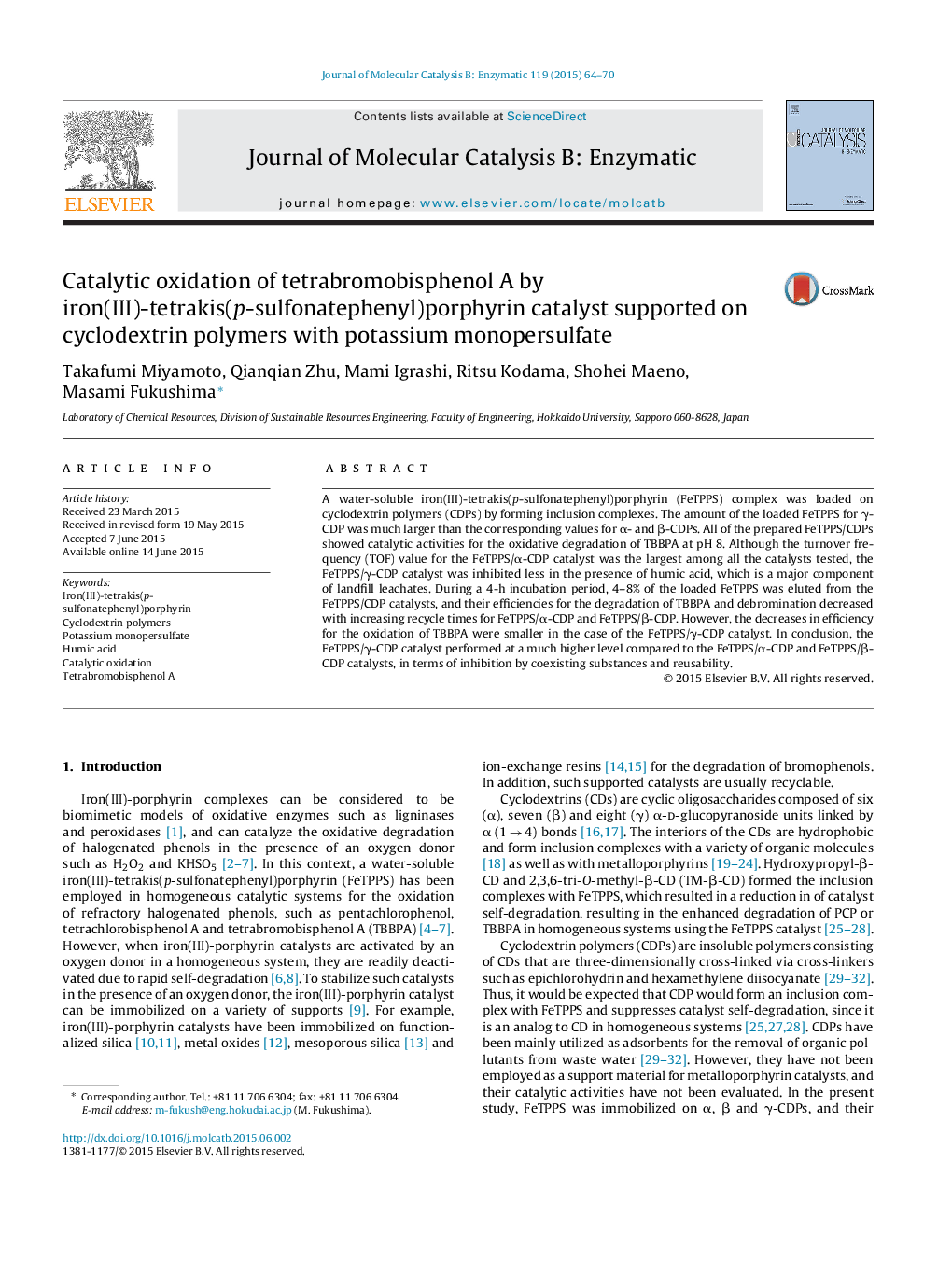| Article ID | Journal | Published Year | Pages | File Type |
|---|---|---|---|---|
| 69652 | Journal of Molecular Catalysis B: Enzymatic | 2015 | 7 Pages |
•A water-soluble FeTPPS catalyst was loaded to CDPs by forming inclusion complexes.•FeTPPS/CDPs showed catalytic activities for oxidative degradation of TBBPA.•Higher reusability and suppression of inhibition by HA were found in FeTPPS/γ-CDP.•Level of the loaded FeTPPS to γ-CDP was much larger than those to α- and β-CDPs.
A water-soluble iron(III)-tetrakis(p-sulfonatephenyl)porphyrin (FeTPPS) complex was loaded on cyclodextrin polymers (CDPs) by forming inclusion complexes. The amount of the loaded FeTPPS for γ-CDP was much larger than the corresponding values for α- and β-CDPs. All of the prepared FeTPPS/CDPs showed catalytic activities for the oxidative degradation of TBBPA at pH 8. Although the turnover frequency (TOF) value for the FeTPPS/α-CDP catalyst was the largest among all the catalysts tested, the FeTPPS/γ-CDP catalyst was inhibited less in the presence of humic acid, which is a major component of landfill leachates. During a 4-h incubation period, 4–8% of the loaded FeTPPS was eluted from the FeTPPS/CDP catalysts, and their efficiencies for the degradation of TBBPA and debromination decreased with increasing recycle times for FeTPPS/α-CDP and FeTPPS/β-CDP. However, the decreases in efficiency for the oxidation of TBBPA were smaller in the case of the FeTPPS/γ-CDP catalyst. In conclusion, the FeTPPS/γ-CDP catalyst performed at a much higher level compared to the FeTPPS/α-CDP and FeTPPS/β-CDP catalysts, in terms of inhibition by coexisting substances and reusability.
Graphical abstractFigure optionsDownload full-size imageDownload as PowerPoint slide
